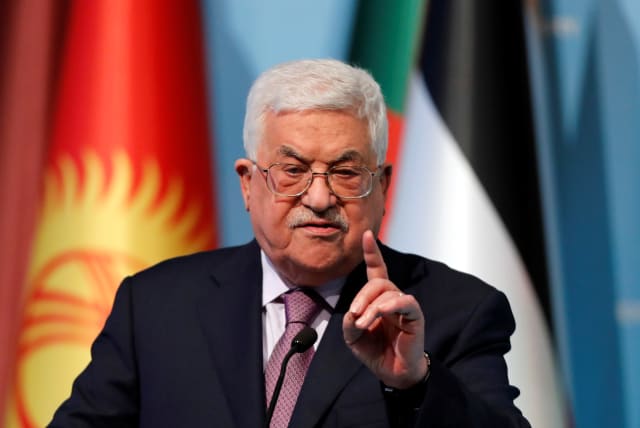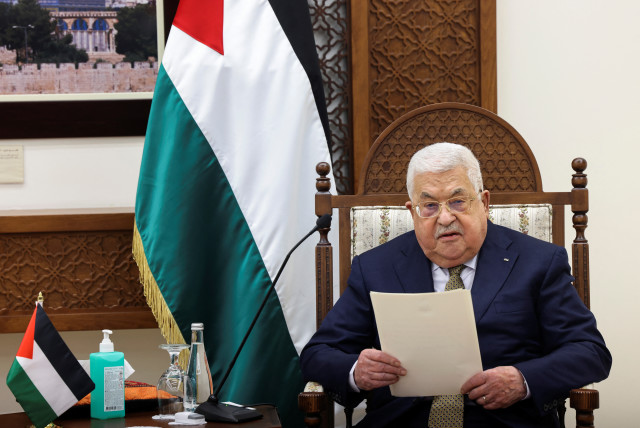How tensions between Hamas and Fatah could change Gaza - analysis

The Hamas decision to launch the unprecedented massacre of October 7 was an attempt to launch a first strike that could change the region.
Tensions between Hamas and Fatah, the two largest Palestinian factions, have been growing and becoming more visible. While the two groups have been rivals historically, the Oct. 7 attack led to a focus on Gaza, while the Palestinian Authority in the West Bank, where Fatah is strongest, appeared sidelined.
Fatah slammed Hamas on Saturday as “those who were responsible for the return of the occupation to the Gaza Strip and [who] caused the Nakba [catastrophe], which our Palestinian people live, have no right to dictate national priorities.” Meanwhile, Hamas has been criticizing the PA’s new prime minister, Mohammad Mustafa, claiming that his appointment lacks consensus. All of this indicates that there is much more going on beneath the surface.
Hamas’s decision to launch the unprecedented Oct. 7 massacre was an attempt to launch a first strike, a match that could light the region on fire and change the current dynamics. It sought to derail talks of Israel-Saudi normalization and set in motion Iranian-backed attacks from Hezbollah and the Houthis, as well as the Iranian operationalization of its proxy groups in Iraq and Syria.
Hamas was in the driver’s seat, with pretensions that it could rise to the level of a regional power. For instance, it was able to get tacit support from Russia and China in the immediate aftermath of Oct. 7. Hamas is hosted by Doha, a major non-NATO ally of the West, and is also backed by Turkey, a NATO member. This means that over the last five months, Hamas has appeared to be the center of attention. For the Palestinian Authority, this is a potential disaster.
On the one hand, this could lead to an attempted Hamas takeover of the West Bank; Hamas could leverage a hostage deal to gain influence and try to enact a unity government in the West Bank that would allow it to participate in politics. It could, for instance, move the PA to choose a “technocratic” government and then use that as a back door to move back to the territory. It could also play the long game by waiting out the aging Palestinian Authority leadership before swooping in. This would all turn back the clock to an era before Hamas took over Gaza and ejected Fatah and its Gazan leader, Mohammad Dahlan.

So far, hundreds of Hamas members in the West Bank have been arrested, with around 800 detained within the first month after Oct. 7. All the while, the Palestinian Authority continues to face challenges to its power, having already lost control of parts of Jenin over the last few years.
This is the context of the current tensions between Hamas and Fatah. Hamas wants to continue to control parts of Gaza and then leverage that to increase its role in the West Bank. With support from anti-Western countries abroad, its leadership thinks it has smooth sailing ahead; all it has to do is wait. It also thinks it might be able to lure over some support from those who had been closer to Fatah over the last decades.
A welcome change to Ramallah
The PA has not been able to rally much support from abroad since Oct. 7, but things are changing. The Mustafa appointment could bring a welcome change to Ramallah. Last Tuesday, Mahmoud Abbas hosted Canadian Foreign Minister Mélanie Joly in a meeting described as positive. PA Foreign Minister Riyad al-Maliki spoke with his Brazilian counterpart, Mauro Vieira, while Abbas hosted Vieira at his office on Sunday. Brazil has harshly criticized Israel’s war in Gaza since the start. In the realm of foreign affairs, Abbas also spoke with Qatari Emir Tamim bin Hamad Al Thani on Saturday.
Hamas-Fatah tensions now provide a potential silver lining for Gaza by creating an opening for Gazans to critique Hamas. Human rights activist Ihab Hassan noted that “since Hamas’s bloody coup in Gaza 17 years ago, Hamas has cultivated a narrative that labels any critics as collaborators or as aligning with Israel. This narrative, heavily promoted by Hamas supporters and influencers since the onset of this war, aims to stigmatize and discredit any dissent against Hamas and its reckless policies and wars.”
This opening to criticism comes as Hamas continues to try to control humanitarian aid entering Gaza. Gunmen in Gaza have fired on people trying to get aid over the past few days, while Hamas has sent plainclothes thugs to harass people in the north. Hamas also murdered a clan leader in Gaza in a mafia-like way to send a message to the clans in Gaza not to work with Israel, a message echoed by the Palestinian Authority to its local clans.
There are many balls in the air at the moment, and it is not clear how it will all play out. For instance, the various countries conducting airdrops to Gaza and backing the airdrops, like Jordan, the UK, the US, Germany, Egypt, and the UAE, all have good relations with the PA; the UAE supports the World Central Kitchen maritime corridor and Spanish charity Open Arms. It is unclear how countries interested in the PA returning to Gaza can make that happen.
A day later, Israel discussed the plan, including the idea of humanitarian pockets or bubbles, but provided few practical details. It is not clear who will control these areas. So far, there has been a lot of chaos in northern Gaza, something Hamas feeds off. In southern Gaza, Hamas continues to cling to a bastion in Rafah while also controlling the central camp area. Overall, it still has around 10,000 men. Israel is talking up an operation in Rafah, but there is also a push for a ceasefire; the Rafah operation likely won’t happen for weeks.
The Fatah-Hamas tensions, therefore, come at a unique time, during a new phase in the Gaza war. It remains to be seen if either side will exploit the tensions and seek to do something in Gaza or the West Bank. For now, the Palestinian Authority and Fatah have a chance to take the initiative after five months of Hamas being in the spotlight.
